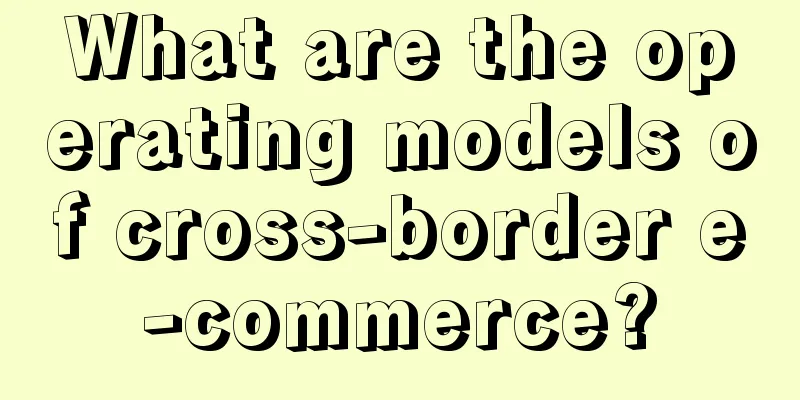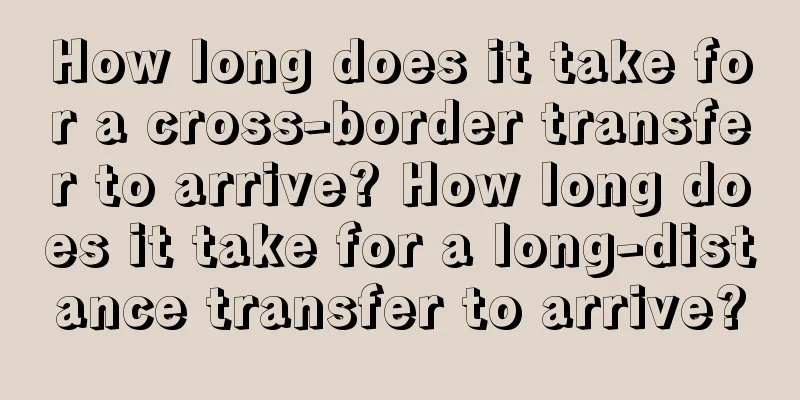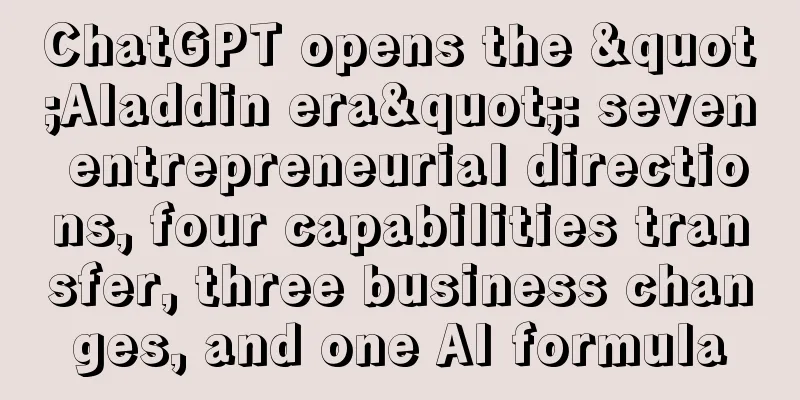[Ten Thousand Words of Practical Knowledge] A Complete Analysis of the Four-Step Strategy for Community Operation in Private Domain Traffic Operation
![[Ten Thousand Words of Practical Knowledge] A Complete Analysis of the Four-Step Strategy for Community Operation in Private Domain Traffic Operation](/upload/images/67e6d69476861.webp)
In the operation of private domain traffic, a key part is community operation. So how to do a good job in community operation? There are many methodologies in different dimensions. For example, the most common one is to formulate corresponding strategies according to the different stages of community operation. Today, I, Pai, want to share with you one more thing: approaching the community from another perspective, that is, from the perspective of us operators, to see how community operations should be done specifically. We can analyze it from four dimensions: community positioning, community value content output, community personnel management, and formulation of community SOP standardized processes. 01 Four-step strategy for community operation: community positioningIt is no exaggeration to say that at least 90% of the reasons why community operations fail can be attributed to positioning issues. Community positioning is complex, but it is also simple. It is complex because it is not as simple as categorizing the community into fan groups, traffic groups, or conversion groups. This belongs to the community type, which is part of the positioning work but not all. It is simple because we only need three steps to complete the community positioning work. Step 1: Business model analysisWe need to realize that the core purpose of choosing social marketing is to provide business growth for the company. If the social marketing you do is out of touch with your original business model, then no matter how well you operate your social network, its value will not be reflected in the business end. To put it bluntly, you are just playing rogue. Therefore, we should start from the enterprise itself and clarify the position of the community in the enterprise's business structure and the role it plays by sorting out the enterprise's business processes. How should the business process of an enterprise be organized? In fact, it is done from two directions: transaction structure and transaction object. By organizing these two dimensions, we can draw a business process diagram for the enterprise, so that we can easily determine where the community should be in the enterprise business. Let me take the "education/training" industry as an example: For example, the main trading partners of an educational institution may include full-time lecturers, part-time lecturers, corporate customers and C-end customers. Then we use connections to mark out the interests or service exchanges between the enterprise and these different trading partners. If an enterprise wants to establish a community, it needs to be clear who the community serves. The positioning and role of the community will vary depending on the service target. For example, if it is aimed at C-end customers, then the positioning of this community should be a learning community, and its role is to sell relevant courses by sharing relevant knowledge. After we have sorted out the company's business processes, we will know the position of the community we want to establish in the entire business model and what role it plays. Step 2: Identify the type of communityThere are many types of communities, such as traffic generation groups, conversion groups, fan groups, flash groups, repeat purchase groups, etc. How should we define them? First of all, we should forget all the types we just mentioned. These are just nouns and are not important. You can even call them Group A or Group B. The key is that we must realize that the type of community should be determined based on the position of the community in the entire enterprise business model. Here we can use the AIDASS model to help us determine the type of community. This model is mainly divided into five parts: attention, interest, desire, behavior, satisfaction and communication. It is an analytical model for customer purchase and communication behavior. Let's continue to use the previous case to illustrate that if we want to build a community for C-end users, then a C-end user, from the beginning to the final course purchase, will generally go through the following five steps. First, he notices our product, such as through an advertising page; then he becomes interested, and then he is stimulated to have desires, such as a desire for knowledge. Then he will take a specific action, such as paying for an order. Finally, if he is satisfied with the course, he will become our fan, thus helping us to spread it secondary. So if we draw a line, with attracting user attention on the far left and user repurchase or completion of distribution on the far right, then the steps in between are: generating interest, stimulating desire, taking action, satisfaction, and sharing and spreading. At this time, we need to think about where our community is in this link. If it is in the link from generating interest to stimulating desire, then the type of community can be a drainage group; if it is in the link from stimulating desire to taking action, then it can be positioned as a conversion group; if it is in the process from satisfaction to sharing and dissemination, that is, when doing a good job of after-sales maintenance, then the community can be positioned as a fan group. This is what we often call the community matrix. Community operation often does not refer to a specific community, but is composed of multiple communities with different functions and goals. Of course, these tasks can also be completed through other carriers, such as using personal WeChat accounts or corporate WeChat accounts to understand users' interests through simple consultations, and then push targeted products; or in the satisfaction part, by providing comprehensive after-sales service to improve user stickiness, which is called VIP exclusive one-to-one service. Of course, we can also complete all the above steps through a community, which is the so-called flash mob group. In a relatively short period of time, the entire process from user interest to final payment, ordering and sharing is completed. Therefore, we can also realize that the key to operating a flash mob group is to have a script. Because users go from left to right, various problems will definitely arise in the process. In the operation of the community matrix, we can also solve them in a targeted manner and then guide users step by step. In a flash mob group, you don’t have the time and energy to deal with these, so you must design the script in advance. It can be said that the quality of the script directly determines the success or failure of the operation of a flash mob community. Okay, let's look back at this link. When your community is placed closer to the left side of the link, then the community is mainly focused on traffic diversion and fission. After all, if the conversion rate remains unchanged, the larger the base, the higher the final GMV; and its core purpose is to think about how to generate user interest and how to stimulate user desire as the first priority. When the community is placed in the middle, conversion should be the first priority, and your content output or event planning should also be planned around effectively improving conversion rates. When the community is placed on the far right, improving user loyalty should be the first priority. So to sum up, when we sort out the business model of the enterprise and the user purchase path based on the AIDASS model, we can clearly know what kind of community we need to build, what responsibilities this community bears, how its evaluation indicators should be formulated, and how the content output should be planned. Step 3: 5W1H community positioning self-examinationThe so-called 5W1H is actually 6 questions:
In fact, the 5W1H can be seen as our community positioning work from the user's perspective. Because whether it is the sorting out of the enterprise business model or the sorting out of the user purchase path based on AIDASS, it is more from the perspective of the enterprise, knowing where the community we have built is in the entire business model and where it is in the purchase path. By determining it, we also determine the type of community and the key elements of community operation, including the core purpose, output content, etc. At this time, we will conduct a self-examination of the entire community positioning through the six questions of 5W1H to ensure that the community positioning work is not based on a single perspective, but is combined with user needs, so as to avoid our community can be effectively implemented in the subsequent practical operations. The above is all about community positioning, which is roughly divided into three steps: sorting out the business model of the enterprise, determining the community type based on the user purchase path sorting of AIDASS, and self-examination of the community positioning work through the six questions of 5W1H. 02 Four-step strategy for community operation: output of valuable contentWe all know that the essence of community operation is to connect more people and achieve the transformation of user relationships. In this process, we need to continuously output valuable content to achieve the purpose of building user trust. So the question is, what is valuable content? In fact, in my opinion, the output of community value content actually has two meanings: the first is that the output content is valuable, is the real need of users, and can solve their pain points; the second is that when you output content, it is effective. This is like a boyfriend and girlfriend in love. Many times we complain, why can't she feel my goodness, I have given so much! On the one hand, your contribution may not be what he wants, and on the other hand, your method is problematic when you give. So when we have a good product, a product that can truly solve user pain points, you must pay attention to the methods and approaches when displaying and introducing this product. So how should we do it? We can divide it into three steps: content classification, content packaging, and content output. Step 1: Content ClassificationCommon social content can be roughly divided into three types: 1) Product-related content It can include product information, such as grass-planting content, user experience sharing, etc., and also include the output of service content (of course, this service not only refers to the after-sales service of the product, but can also include the services provided by the community, but it must be related to the product, such as question-and-answer services for course learning). 2) Content related to the values you advocate As the saying goes, one person walks fast, a group of people walks far. But there is a premise here, that is, the values of each other should be the same. So in community operation, there is a very important part, which is to see how many people the values you advocate can influence. 3) Interactive content It is the interaction between community members, including the interaction between members guided by you, such as kissing up to a big boss, or following a hot topic and eating melons together. The fundamental reason why we need to classify content is to avoid too much content of a certain type when we output it. For example, too much product-related content can easily become a marketing group, causing user disgust. Therefore, reasonable classification of content can ensure that when we output it, we can make users accept it more effectively. Regarding the classification of content, different industries and products can be divided according to different dimensions. However, my classification is relatively universal. I believe that most communities can apply it. Step 2: Content packagingAfter we have classified the content, the second step is to package it. The so-called packaging does not mean designing beautiful posters and writing golden copy. These are the final specific forms of presentation. Packaging should mean turning your content into a form that is relatively easy for strangers to accept! This is the second meaning of the value content mentioned in the previous video. Give your content to users effectively. The best way to package content at the moment, in my opinion, is to package your content into a topic for community members to discuss and exchange ideas. Then, in this process, you can subtly guide users to accept your product and the values you advocate. Of course, some people will say, "Well, then, wouldn't activities be okay?" Indeed, we can use products or content in the form of activities to get users involved. For example, free trials, sharing gifts, etc., can allow users to experience the product and thus perceive the value of the product. But there is a key issue here: in fact, for most communities, especially learning and growth communities. You and community members do not have a relationship of mutual trust from the beginning. There is actually a process from the time users first enter the community to the final conversion. In other words, user education has a time period. Therefore, if you want to output valuable content through activities, you need to first distinguish the type of your activities. If it is centered on topics, such as topic discussions, brainstorming, etc., then that is OK. But if your activities are for the purpose of conversion and have a marketing nature, then this type of activity actually acts as a booster. That is, we divide user relationships into several different stages, from unfamiliarity, familiarity, trust, etc., and at each stage, the transformation of user relationships can be assisted by marketing activities, such as attracting traffic through fission activities, and completing conversions through low-price promotions, etc. When the relationship between you and the community members has warmed up to a certain stage, you can complete the conversion through such activities. Then it must be to break through the last layer of paper, rather than to do it without any emotional basis. Otherwise, if you do it too much, once the users become numb, it may cause trouble to the users, and seriously affect your brand image. Therefore, marketing activities are not very helpful in educating users. The best way to cultivate relationships is through creating topics and continuously heating up the relationship through communication and interaction between you. So in conclusion, the best way to package content is with topics, and activities, especially marketing activities, are just a booster to help you get the finishing touch. Topics are the glue between people. Step 3: Develop a community column operation strategyIf our community operation is still in its infancy, the first two steps are sufficient. However, when the scale of our community enters an explosive stage and the operation enters a period of rapid development, it will be very tiring to rely on only one or two steps. Especially for community operators, problems will inevitably arise over time. So at this time, in order to ensure that our valuable content can be efficiently output, we need to proceed to the third step: formulate a community column operation strategy. The so-called columnization is to treat the community as a content operation, by dividing it into multiple sections, and then filling different sections with appropriate content, so as to efficiently output valuable content. The most common community columnization is, for example, morning and evening reports, many groups will share some information and news in the group at a fixed time in the morning and evening; there are also fixed times every week to share online knowledge or answer questions from group members, etc. The biggest benefit of community column operation is that it can be operated through standardized means over a longer period of time, which can not only improve the work efficiency of the team, but also ensure the output of community content. At the same time, the community operation goals can be split into sub-goals of multiple dimensions. Use these different content sections to establish different connections with members, thereby enhancing mutual emotions. Ultimately, it will increase community activity and effectively extend the user life cycle of the community! The common column divisions of community operations can include: information push, community sharing, user consultation, event planning, and content selection, etc. Different companies and industries will have different ways of columnizing community content. The key is to select appropriate content for refinement, rather than pursuing the pursuit of more content. For example, community group buying communities and e-commerce product promotion groups do not need to select historical content (after all, there is no need to make a collection of products that have already participated), but they can do some event planning, or select user reviews, feedback and other content; while learning and knowledge sharing communities do not need too many marketing activities, but should have more column content such as theme discussions and historical content selections. 03 Four-step strategy for community operation: personnel managementWe need to be aware that the essence of a community is to aggregate users and achieve valuable connections. So strictly speaking, community operations should at least include members and content generated by members. So to supplement the second section I mentioned before, when it comes to the output of community value content, on the one hand, in addition to the content output officially planned by us operators, or companies and brand owners, we also need to find ways to inspire members to produce high-quality content together. Therefore, community personnel management can be divided into two aspects:
1. Management of community membersA community is a group of people who come together to do something. The closer the relationship between members, the greater the potential energy that can be released. The strength of community relationships = the strength of interest relationships + the strength of emotional relationships + the strength of organizational relationships. The organization and discipline of the community are the foundation of the strength of all other relationships. In a community without organization and discipline, you cannot ensure that everyone is moving in the same direction. This is also a core focus of community member management. How do we maintain the organization and discipline of a community? The key points can be divided into two things: designing the community's organizational structure and formulating the community's management system. The first focus: designing the community organizational structure The first step is to design the organizational structure. We can start from two perspectives: 1) From the perspective of enterprises and brand owners Strictly speaking, the organizational structure in the community is not a top-down, management-constrained structure. Instead, it should be a flat, horizontal structure. In other words, different people are responsible for different things. Generally speaking, it can include: housekeepers, pre-sales consultants, after-sales customer service... and so on. Simply put, it is to let community members know who to go to when they encounter any problems or have any problems! For example, to sign up for an event, to receive a reward, etc. 2) From the perspective of community members You need to give community members a role. What does that mean? When we build a community, for most members, this is a strange place. Under such objective circumstances, if you emphasize relationship building right from the start, it will often backfire. The best way is to assign a role to each member first, and then use common target events to achieve interaction between roles, thereby enhancing mutual trust and building stronger social relationships. This is like an actor acting. You need to give the actor a role first so that the actor can get into the role, and then you can produce a wonderful work. In a community, we can usually divide roles into 8 types, which are the 8 types listed above. Of course, different industries and types of communities may have different role positioning. But it should be noted that: Generally speaking, in the early stage of community operation, some key roles are basically played by our operators. For example, group pets, opinion leaders, etc. Through corresponding roles, the atmosphere of the community is constantly activated; secondly, in the normal operation process, we need to consciously cultivate and recruit suitable community members to replace the operators to assume the corresponding roles. For example, for some learning communities, before establishing a group, we need to find people with relatively strong voice in the field and invite them to join the group. We can strengthen this role through marketing, knowledge sharing, live courses, etc. For roles such as backbone elites and group pets, operators can observe each member through daily interactions to see who has potential in this area, and then cultivate them into corresponding roles. Once a member is used to playing a certain role for a long time, do you still need to worry about his activity and the strength of his relationship connection? Right! The second focus: developing a community management system There is no order without rules. The organization of a community is largely reflected in the rules you set. The management system of the community can be mainly divided into four things: entry standards, encouraged behaviors, prohibited behaviors, and reward and punishment systems. To put it simply, it means telling members what kind of people are in this group, what behaviors are encouraged and prohibited in this group, and what the corresponding reward and punishment mechanism is. If you make these things clear, it is equivalent to setting the rules. When formulating a management mechanism, there are two points that we need to pay attention to: First, it is necessary to clearly state what behaviors are encouraged. I found that many communities always emphasize prohibited behaviors, such as not posting advertisements, not verbally abusing each other, etc. But in fact, encouraging behaviors is what a community should focus on conveying, and you must let members know what they can do in this group. In addition, when designing encouraging behaviors, you must be specific and not too broad, especially when the operator is targeting certain specific activities and you want members to discuss them together. At this time, you must make it clear what content to discuss and what the specific point is! Is it the experience of using the product or the experience of the shopping process? For example, when brainstorming in some learning communities, it is necessary to make it clear whether the discussion is about the copy, the title of the article, or the design of the poster. Second, when writing group announcements, you need to follow the principle of interest first, that is: group value + group rules + punishment mechanism + community vision. First, talk about what value your community can bring to members, then what behaviors are encouraged in the group and what kind of rewards can be brought, and then add what behaviors are prohibited and what punishments will be imposed once they are done. You must learn to give members a date first! Finally, to sublimate it, you can add your community vision and tell users what our ultimate goal is to achieve. 2. Management of member content productionIn this part, the most important thing is to inspire users to produce content. Many communities eventually become dead groups or become places for companies and brand owners to have fun. This is because when you operate the community, you don’t pay attention to the content production of members. Simply put, there is no interaction. User interaction is the basis for users to be willing to produce content. Without interaction, there can be no content. Where does user interaction come from? It comes from your value output, from the role allocation of community members, and more importantly, from the encouraging behaviors you set for users in the community. Therefore, when it comes to stimulating user interaction and their desire to express themselves and share, the key is to amplify the part that encourages behavior. Here are three things to note: 1) Your encouraging behavior must be specific, which has been discussed in the previous video. 2) It is best to associate a reward measure with each specific behavior that is encouraged. This reward measure can be interest-related, but it can also be emotion-related. Use human nature to formulate specific reward content. For example, use vanity! You know, most people are eager to become opinion leaders in a small fish pond. It is difficult for people to resist the feeling of being praised by others. 3) The most important point is to build a user growth system. It means that one encouraging behavior is associated with a reward measure, and then multiple encouraging behaviors are accumulated to obtain a growth-oriented benefit, such as a higher level, more rights and interests, etc. This is what we often call a membership system. So, looking at it from the other side, when many communities build membership systems, they often only link membership growth with shopping. This actually needs to be determined according to your industry, product, and community type. The best membership growth system should be linked to shopping, as well as user content output and user specific behavior. At most, the weights are different. In addition to the above three points, we can also manage the content production of community members by creating four senses of the community, namely: sense of ceremony, sense of participation, sense of organization and sense of belonging. Through these four, we can create a community atmosphere and stimulate users' desire to produce content. 04 Four-step strategy for community operation: SOP formulationThe last part of community operation is to formulate community SOP. The so-called SOP refers to a standardized process. Whether it is the positioning of community operations, personnel management or the output of valuable content, after planning, we need to sort out the entire process, including specific operating steps, division of labor of the operation team, processes, etc., and formulate a reasonable SOP. We have always said that if operators want to improve their abilities, they must learn to accumulate experience, skills, or methods. The accumulation of experience is ultimately presented in the form of SOP. The formulation of community operation SOP can help us summarize the accumulated experience, methods and approaches into text or tables, so that they can be directly applied in future work. On the other hand, when there are personnel changes in the team, new employees can quickly master them through short-term training, thus ensuring the long-term consistency and coherence of the entire operation. The formulation of the community operation SOP actually consists of four forms: community planning full-process SOP, community infrastructure construction SOP, community operation growth SOP, and community daily maintenance SOP. In addition to the above four, we can also add a community activity SOP based on different industries and products. In fact, when we are carrying out community operations, we are working around these five tables! Operators can also be very clear about what to do and when, and what the meaning and purpose behind everything they do is. So in summary, through the sorting and formulation of the SOP process, we can ensure that our community operation strategy can be implemented efficiently. SummarizeThe above is the full content of the four-step strategy for community operation, which is actually four things: community positioning, valuable content output, community personnel management, and community SOP formulation. Of course, in addition to this, community operation requires a lot of detailed operations! This requires every operator to gradually accumulate experience, continuously iterate and optimize in actual project operations, and then gradually master it. Author: Pi Ye Operation, WeChat public account: Pai Ye Operation (pyyunying) |
<<: Private Domain Series 04: 99% of operators don’t know the advanced social gameplay
Recommend
Don’t ask others how they succeeded, it’s useless!
The secret of success is undoubtedly what every su...
Among Douyin, Kuaishou, Toutiao, WeChat official accounts, and Xiaohongshu, which one is easier to make money by running your own media?
This article compares and analyzes the advantages ...
Can you make money by starting a cross-border e-commerce business with Shopee? What are the money-making skills?
With the rapid development of the Internet, cross-...
What are the Lazada tiers for? What are the tiers?
On the Lazada platform, sellers and buyers have a ...
It is normal for Xiaohongshu notes to have no traffic...
Why do my notes have no traffic? Why are my notes ...
Does Shopee Taiwan require a VPN? Do I need an external network?
Cross-border e-commerce platforms are overseas web...
What should I do if my Amazon store is linked? What does it mean when a store is linked?
When you open a store on Amazon, if you find that ...
E-commerce platforms have different faces and the same face for different people
The author of this article proposed a concept, the...
How much commercial value do athletes who create miracles have?
Let us explore together how great the commercial v...
How to find hot-selling products on eBay? How to increase traffic?
If you want to do cross-border e-commerce business...
Vipshop’s “Special Sale Arena”
Vipshop has gained wide recognition and praise fro...
Copywriting breakthrough: imagination or insight
This article mainly discusses the relationship bet...
Innovation and diversified development of pharmacies in the new retail era
What problems will the new changes in pharmacies b...
What kind of inspiration does the popularity of "Black Myth: Wukong" give to brands?
The explosive popularity of "Black Myth: Wuko...
College students write papers and perform AI big model magic show
The student paper was misjudged by AI, highlightin...









